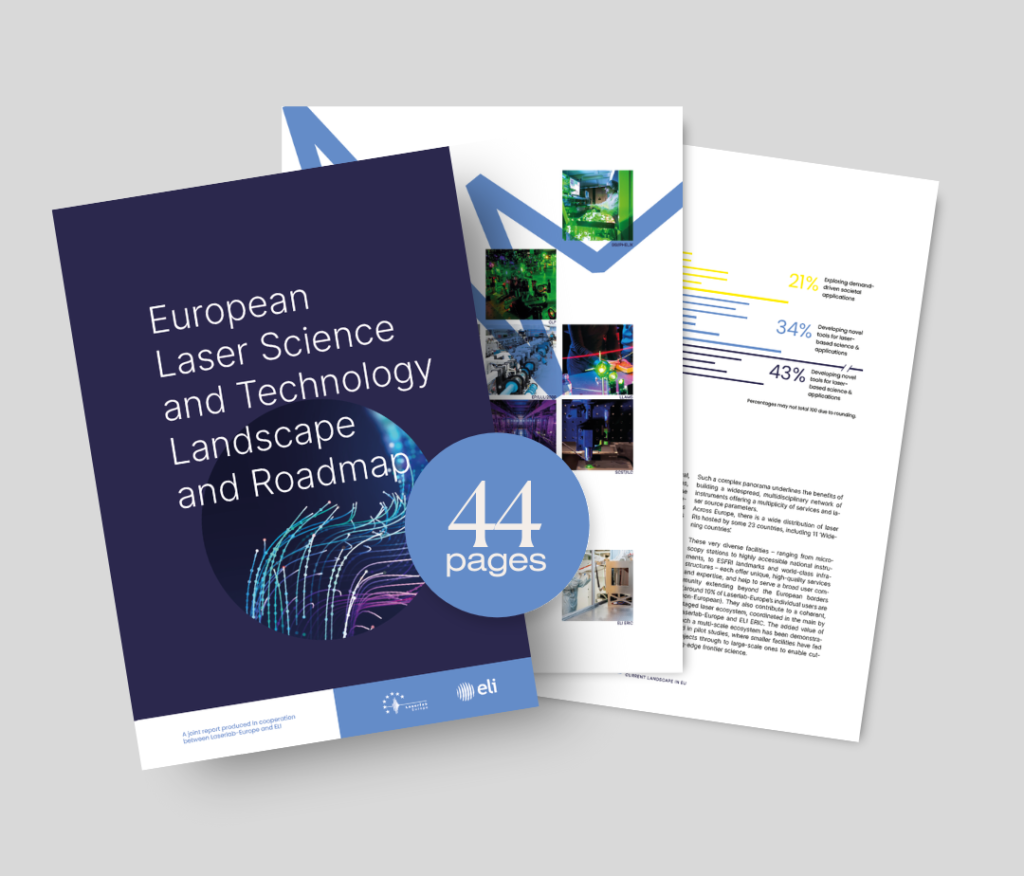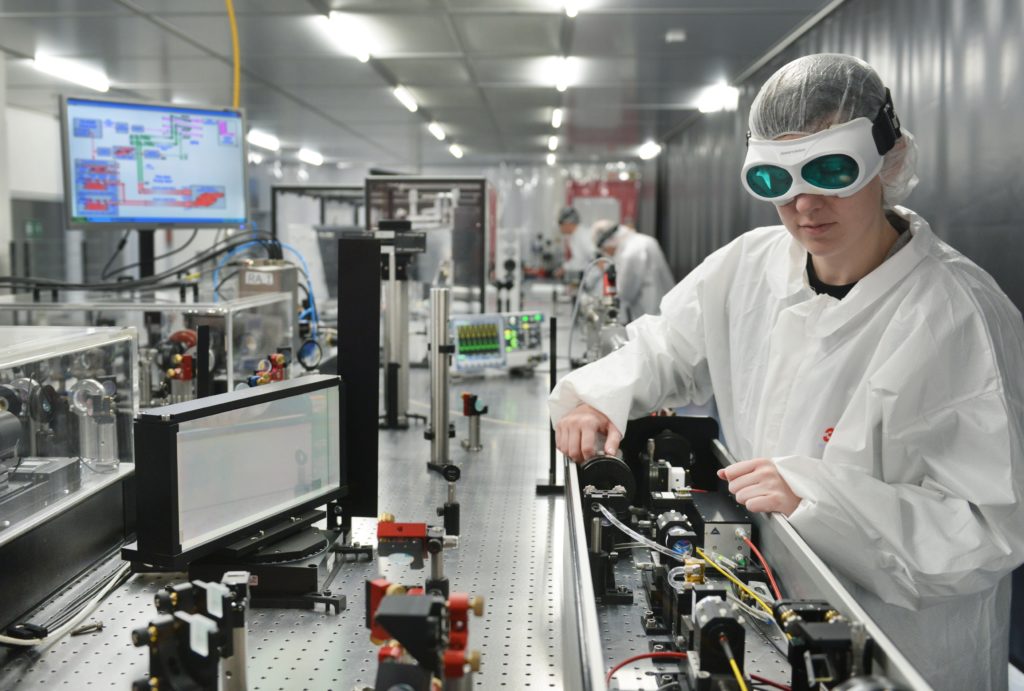
European Laser Science and Technology Landscape Analysis Published
Laserlab-Europe and the Extreme Light Infrastructure (ELI ERIC) have joined forces to analyse the current laser-based science landscape in Europe. The analysis aims to assess the European laser community to provide a better understanding of the services offered to users by Research Infrastructures (RIs) operating laser sources as well as the user needs and requirements.
Across Europe, there is a wide distribution of laser RIs hosted by some 23 countries, including 11 ‘Widening countries’. These very diverse facilities – ranging from microscopy stations to highly accessible national instruments, to ESFRI landmarks – each offer unique, high-quality services and expertise, and help serve a broad user community extending beyond the European borders. They also contribute to a coherent, staged laser ecosystem, coordinated by Laserlab-Europe and ELI ERIC.

The consolidated report gives an overview of the complex landscape of laser RIs in Europe, identifies complementarities and efforts to be aligned, and defines high-level objectives. The factual and up-to-date information provided will support discussions – with the European Commission and with national agencies – about sustainable funding for RIs. It will prove valuable to decision-makers, stakeholders and the wider laser RI community in ensuring the growth and sustainability of this critical field.
RI services and user community needs
The RI survey revealed that the European laser landscape is extremely diverse in terms of the services offered to users, and is not restricted to laser photon providers. The services range from primary laser sources to secondary sources – covering a wide range of radiation wavelengths – and include a variety of laser-based instruments and techniques.
A strong collaborative component exists alongside this access to tools and techniques. The majority of the RIs offer the support and expertise of their local technical and scientific teams, meeting the needs of almost 90 percent of users surveyed. In addition, many RIs offer additional support services, which are greatly appreciated by users. For example, around half of the RIs offer mechanical workshops, one-third offer biology/cell culture laboratories (up to bio-sample management and handling) or target laboratories, and one-fifth offer cryogenics. These additional features should be duly advertised, as they may be specific to the European laser RI community and they may encourage new users to apply for access.

Collaboration and support from technical and scientific teams are essential and highly valued by the user community. The impact of laser-based instruments is broad, and crosses a large number of sectors, including energy, health, space, environment, manufacturing, food production and processing as well as cultural heritage. For an in-depth analysis of the various sectors, please download the landscape and roadmap document.
Need to establish a sustainable European laser RI ecosystem
The survey results suggest a need to establish a sustainable European laser RI ecosystem, offering improved access to facilities and increased collaboration. The challenges in standardisation, coordination and funding need to be addressed to ensure the sustainability and global competitiveness of the resulting ecosystem.
The report makes several recommendations to address these challenges, including:
- establishing a common strategy for laser RIs in Europe to better align efforts, enhance complementarities and increase synergies
- encouraging standardisation and interoperability of laser RIs to improve efficiency, facilitate user mobility and ensure data compatibility
- securing long-term and sustainable funding for laser RIs to ensure their stability, growth and
competitiveness
- enhancing coordination between laser RIs and user communities, to gain a better understanding of user needs and requirements, and to better align the development of laser RIs with user demands.
To download the Landscape Analysis, please visit: European Laser Science and Technology Landscape Analysis Published — LASERLAB-EUROPE